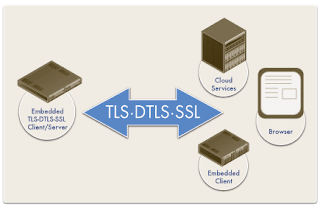EU Cybersecurity Strategy (I)
I like reading Cybersecurity Strategies to know what are the next steps about Cybersecurity in the world. I’ve read lots of them since I wrote about “Spain is sold” in 2013. I’ve read about Security Directives for the European Union, DoD Cyber Strategy of the U.S. of America, National Cyber Strategy of the U.S. of America, Revue Stratégique Cyberdéfense de France and National Cybersecurity Strategy of Spain. I’m going to write today about the new EU Cybersecurity Strategy which has been released recently.
The new EU Cybersecurity Strategy addresses three areas of action – (1) resilience, technological sovereignty and leadership, (2) building operational capacity to prevent, deter and respond, and (3) advancing a global and open cyberspace. I’m going to write today about the first one which is the largest area of action.
First of all, the Commission proposes to reform the Security Directives for the European Union. The reformed NIS Directive will provide the basis for more specific rules for strategically important sectors such as energy, transport and health. In addition, the Cybersecurity Strategy proposes to build a European Cyber Shield with Security Operation Centres across the EU. In fact, the goal would be to connect as many centres as possible across the EU to create collective knowledge and share best practices.
An ultra-secure communication infrastructure is also required by the European Union to transmit confidential information using an ultra-secure form of encryption to shield against cyberattacks. What’s more, it will be built with European Technology. In addition, it will have two main components: terrestrial fibre communication networks and space satellites covering the whole EU. Moreover, securing the next generation of broadband mobile communications such as 5G and future generations of networks are of great interest in this Cybersecurity Strategy because we should avoid dependencies and to foster a sustainable and diverse supply chain.
As the Internet of Things proliferates, the Commission also wants to prepare European cybersecurity certification schemes for the purpose of ensuring an adequate level of cybersecurity for IoT products, IoT services and IoT processes in the Union. In addition to an Internet of Secure Things, the Commision intends to develop a contingency plan for dealing with extreme scenarios affecting the integrity and availability of the global DNS root system. Right now, there are thirteen DNS root servers, two of them in the EU, which should be protected against cyberattacks.
 |
| List of Root DNS Servers |
Finally, the Cybersecurity Strategy intends to reinforce the presence on the technology supply chain and develop, attract and retain the best cybersecurity talent. The first one put special focus through dedicated activities under the Digital Innovation Hubs in the Digital Europe Programme. The second one pays attention to develop, attract and retain more diverse talent as well as encourage women’s participation in science, technology, engineering, and mathematics education through relevant EU actors such as the ENISA, the EDA and the European Security and Defense College (ESDC).
That’s all! I encourage you to read this interesting Cybersecurity Strategy! See you soon!









Commentaires
Enregistrer un commentaire